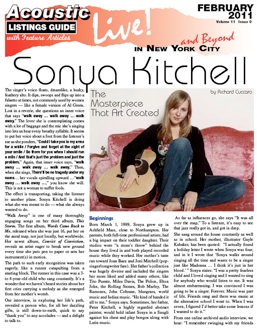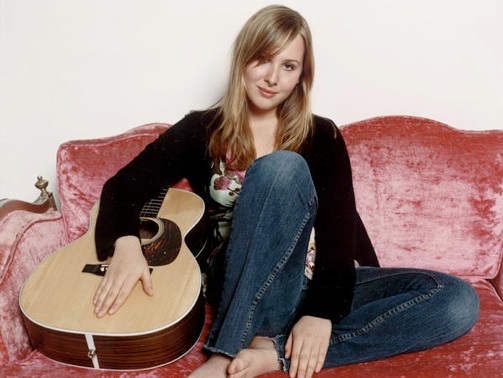Sonya Kitchell
The Masterpiece That Art Created
by Richard Cuccaro
The singer’s voice floats, dreamlike, a husky, feathery alto. It dips, swoops and flips up into a falsetto at times, not commonly used by women singers — like a female version of Al Green. Lost in a reverie, she questions an inner voice that says “walk away … walk away … walk away.” The lover she is contemplating comes with a lot of baggage and the mic she’s singing into lets us hear every breathy syllable. It seems to put her voice about a foot from the listener’s ear as she ponders, “Could I take you in my arms for a while / Forgive and forget at the sight of your smile / Be there for you when I should run a mile / And that’s just the problem and just the problem.” Again, that inner voice says, “walk away … walk away … walk away,” Then, when she sings, There’ll be no tragedy under my name… her vocals spiralling upward …“walk away … walk away …,” you know she will. This is not a woman to suffer fools.
The effect is transporting, taking the listener to another plane. Sonya Kitchell is doing what she was meant to do — what she always wanted to do.
“Walk Away” is one of many thoroughly engaging songs on her third album, This Storm. The first album, Words Came Back to Me, released when she was just 16, put her on the aural map, not just locally, but worldwide. Her newest album, Convict of Conviction, reveals an artist eager to break new ground every time she puts pen to paper or sets her instrument(s) in motion.
The path to such early recognition was taken eagerly, like a runner catapulting from a starting block. The runner in this case was a 3- to 4-year-old child who sang constantly. It’s a wonder that we haven’t heard stories about her first cries carrying a melody as she emerged from her mother’s womb.
Our interview, in exploring her life’s path, revealed a person who, for all her dazzling gifts, is still down-to-earth, quick to say “thank you” to any accolades — and a delight to talk to.
Beginnings
Born March 1, 1989, Sonya grew up in Ashfield Mass, close to Northampton. Her parents, both full-time professional artists, had a big impact on their toddler daughter. Their studios were “a stone’s throw” behind the house they lived in and both played recorded music while they worked. Her mother’s taste ran toward Joan Baez and Joni Mitchell (pop-singer/songwriter fare). Her father’s collection was hugely diverse and included the singers her mom liked and added many others, like Tito Puente, Miles Davis, The Police, Elton John, the Rolling Stones, Bob Marley, The Ramones, John Coltrane, bluegrass, world music and Indian music. “He kind of handed it all to me,” Sonya says. Sometimes, her father, Peter Kitchell, a highly regarded abstract painter, would hold infant Sonya in a Snugli against his chest and play bongos along with Latin music.
As far as influences go, she says “It was all over the map,” To a listener, it’s easy to see that jazz really got in, and got in deep.
She sang around the house constantly as well as in school. Her mother, illustrator Gayle Kabaker, has been quoted: “I actually found a holiday letter I wrote when Sonya was four, and in it I wrote that ‘Sonya walks around singing all the time and wants to be a singer just like Madonna … I think it’s just in her blood.’ ” Sonya states: “I was a pretty fearless child and I loved singing and I wanted to sing for anybody who would listen to me. It was almost embarrassing. I was convinced I was going to be a singer. Forever. Music was part of life. Friends sang and there was music at the alternative school I went to. When I was seven, I figured I’d better take some lessons if I wanted to do it.”
From one online archived audio interview, we hear: “I remember swinging with my friends and [they’d say something like] ‘I’m gonna be a vet,’ and [I’d say], ‘I’m gonna be a singer.’
At 9 years old, she sang onstage at Memorial Hall in Shelburne Falls, Mass. She is quoted in another interview: “I remember singing, ‘Oh What a Beautiful Morning.’ My grandmother played piano and accompanied me. I remember that I loved it and couldn’t wait to do it again…”
About her mom and dad’s rearing skills, she continued: “The daring does come from a place of being supported as a child and as an artist. I know I was fortunate to grow up in a household that encouraged it.”
Her grandfather, who was a jazz pianist and a composer, had passed away when Sonya was very young, and had left her mother his grand piano. “That piano kind of had his spirit in it. I grew up playing underneath it — it made a great fort. I loved it so much. I took a couple of lessons when I was 8 or 9, but that doesn’t really count. We played, but didn’t really know how. I had basic skills, understanding music, but I never considered myself a piano player.” That would change many years later.
Learning How to Sing
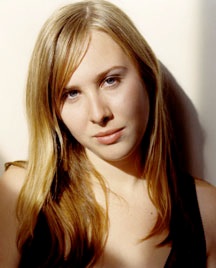
Wikipedia, in a somewhat dated post, states: “As a 10-year-old, she performed at the 1999 Special Olympics World Games in North Carolina. For four years she has taken part in the Vermont Jazz Center Summer Program with Sheila Jordan, and she has won an “outstanding musician” award from the University of Massachusetts High School Jazz Festival and a scholarship to its Jazz in July summer program.
Sonya has said that she developed as a jazz singer through her studies with Sheila Jordan, a renowned vocalist and educator (Jordan initially became known as an interpreter of the music of Charlie “Bird” Parker and later studied with Charles Mingus and Lenny Tristano). Sonya had initially wanted to learn from Sheila how to scat-sing like Ella Fitzgerald. That didn’t happen, she has said, but the lessons have obviously been a huge success in every other regard. Her other vocal coach during this period, Rebecca Parris, is a jazz singer similar to and on a level with Carmen McRae and Sara Vaughan and is known as the First Lady of Boston Jazz. In an interview with David Dye of The World Cafe during her teens, Sonya says, “I think my voice developed a lot faster as a result of all the teachers I worked with, in helping me to learn how to sing in a way that wouldn’t destroy my voice by the time I’m 20, and have more power.”
The First Song
At the age of 12, Sonya was about ready to begin guitar study, but before that began, the attacks of 9/11 happened. She had always kept a journal, but the events of that day would become more than just a journal entry. She said: “I think it was the first time I really understood the world’s suffering and felt really bad about it. I felt the need to do something — I had the desire to fix it, even though you can’t fix the world’s suffering. I wrote a song — it was what I had to say — it was my way of offering comfort and my way of trying to help the situation.” The song was called “If I Cried.” As best she can recall, the lyrics included the words: “Here I am, safe and sound / while others are dying and suffering / There are so many crying today … why must we be like this?” She received help in bringing the melody to fruition from her friend, bluegrass guitarist Michael Daves, now a stalwart on the New York scene, who lived near her back then. She sang the song for a few people and it reached the ears of the surrounding community. The local paper felt it was special enough to do a story on her. The Iron Horse then called to ask if she’d do a show there. Sonya got a band together with older students she knew and thus, Sonya’s performing career was launched. She sold out two shows at the Iron Horse.
Although she had started studying guitar with June Millington (followed later by lessons with Michael Daves), she was, at this point, fronting the band strictly as a singer. By the time she started performing, she had written about three original songs, and filled out her sets with covers of jazz standards. In 2003, an article by Seth Rogovoy, of Berkshire Living Magazine, described 13-year-old Sonya this way: “poised and well-spoken … she’s not at all haughty and doesn’t come across as particularly precocious. She just happens to be the youngest performer to have sold out the Iron Horse Music Hall in Northampton two times in a row. She just happens to have an incredible talent far beyond her years for singing jazz, writing songs and commanding an audience’s attention …Her own compositions now have a place in her repertoire next to sophisticated standards like “Frim Fram Sauce’ and ‘I Remember Clifford.’”
Sonya sang whenever and wherever she could. Quoted elsewhere, she said: “One of the main things I remember doing when I was young, was driving ridiculous distances, just to sing one song at a jam session here, or a show there. I was willing to go any distance, and my mother was supportive enough to take me. She fully believed in me.”
Developing on the Fly
Sonya continued to strictly sing out front with the band as back-up until she was forced to start playing guitar with the band. Speaking about her development in general, she said: “Everything’s happened almost, because I had to [learn new skills]. I was playing guitar, but didn’t think I was good enough to play in shows. But then my guitarist wasn’t available for a tour, so I figured it out. So then I was playing guitar. I eventually started writing more, then suddenly [the set] was mostly originals and then it was all originals. Then it was me singing and playing my songs. It’s almost backward. I started with a band and I started doing all these covers. I had my first solo show ever at South by Southwest (SXSW), which is a really big deal. It’s kind of a nerve-wracking thing to be playing solo for the first time. Most of the people there have maybe never played with a band before and I never played solo before. I’d say, just about now I’m really getting comfortable playing solo. I’m used to playing with musicians and having that support around me and now I’m starting to enjoy the other [playing solo] as well.”
The Writer, The Albums
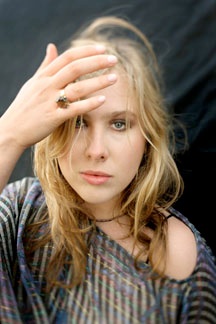
She released her first CD (actually an EP - 6 tracks), Cold Day in 2005. The title track (also included on the second CD) is amazingly mature. Her voice, already womanly sings “It’s a cold day in history / One of the coldest of all time / I’m so caught up with trying to stay warm.” When I reacted on the phone with her, saying, “Wow!” she responded with, “Yeah, that was a long time ago,” perhaps mistaking my enthusiasm for a negative comparison with her current work. Uhh… Sonya … No.
Her second CD, Words Come Back to Me was released in the spring of 2006. A sponsorship deal with Starbucks’® Hear Music label brought the CD into coffee shops around the world. She was still only 16. Some of the material on the CD had to have been written when she was 14 or 15. The mind reels. “Right before that,” she says, “a friend told me, ‘You better get ready for things to change.’ I said, ‘No nothing’s going to change.’ And they really did. That was quite a whirlwind at the time.” Rather than a rebuke to a lover, as it might seem during a first casual listen, the title track quickly reveals itself to be a straining against the remaining tethers of her parents, however liberal they tried to be with her: You hold me down / please / you let me go / I’m dying to be out on my own / and I think I might go crazy.” In her archived interview with David Dye of the World Cafe, David remarked after she played the song: “… a song that, with any luck, will become an anthem for 16-year-olds to play for their parents everywhere.” Sonya responded, a gleeful smirk in her voice: “Right… well, gee… how did you know that?” It had to be very tough for Peter and Gayle, to watch their daughter leave high school after her sophomore year (she graduated via GED), and go on a tour in support of her breakthrough album. The song, “Can’t Get You out of My Mind,” pure blues/jazz, is where she seems to bring all her jazz roots to bear. It sounds like a 40-year-old stretching the words out like taffy: “Oh I got to know, I got to know how you feel about me baby, ‘cus I’m going crazy and it’s really startin’ to hurt so tell me…oh baby tell me…tell me baby.” The album caught the attention of jazz giant Herbie Hancock, who asked Sonya to join him on the support tour for River: The Joni Letters, a Joni Mitchell tribute album. She also played “Let Me Go” on Late Night with David Letterman. The YouTube video shows Letterman to be appropriately impressed.
Her third CD, This Storm, shifted gears into rock. Brilliantly executed, every track is a joy to listen to. It was made with Grammy-winning producer Malcolm Burn (Daniel Lanois, Peter Gabriel, Emmylou Harris) after her tour with Hancock ended. “Walk Away,” quoted earlier is just one of its many delights. The rock band The Slip joined her for the recording sessions and then later accompanied her on tour. About her progress from Words to Storm, on writeon.com, we learn: “There were life things that I was writing about — from and about the people around me or things I projected or things I imagined or things I’d seen — [but] hadn’t lived myself. As two or three years went by, I started to live all of those songs and understand them more deeply. And then on this record, it was more from personal experience.”
Her fourth CD, released in 2010, Convict of Conviction, (more of an EP - 7 tracks) is another distinct departure and was, as she says, “a collection of music from winter, done with a string quartet.” We hear more piano here, as this is where Sonya decided to seriously make use of it. “A couple of years ago I spent a bunch of time alone in a house in the woods and there was a piano. So I started writing music on piano and then started playing it in shows. So, now I play piano,” she says.
The title track, somewhat cryptically describes the dilemmas facing any artist, and probably helps to define Sonya, herself: “And the lines do draw a parallel / right between fact and fiction / so the honest truth cannot yell / over blind conviction / Nobody, nobody, nobody / likes to be kept waiting / Nobody, nobody, nobody / likes to feel powerless…” In “Lighthouse,” the effect of isolation is palpable: “I need lighthouse to guide me home.” “Snowing” begins exquisitely, like a delicate concert tuning session. Here, she displays a near-operatic vocal range. “Gypsy Eyes,” the only track where she uses her guitar, has a Middle-eastern feel with a mesmerizing melody.
The Photographer
Sonya got a camera from her father when she was 12 and has been an avid photographer ever since. She takes pictures wherever she goes — and that carries a global connotation. Her web/blogsite, sonyakitchell.blogspot.com shows some of that work. In 2008, she had a father/daughter show at a gallery near the family’s Northampton home. We’ve included a few photos here:
Top to bottom: Untitled, Little Girl and the Wind, Hurting Water
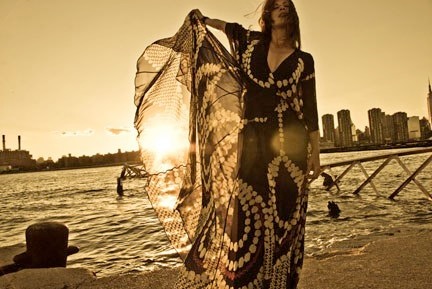
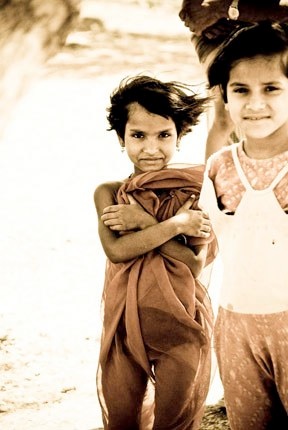

The future looks long and bright for Sonya, and we’ll be watching and listening. We advise our readers to do the same.
Upcoming shows include:
Feb 5 Jonathan’s Restaurant, Ogunquit, ME
7 8pm The Beehive, Boston, MA
9 9:15pm Rockwood Music Hall, Stage 2, New York, NY
11 8pm The Kennett Flash, Kennett Square, PA, $12 Adv / $15 Door
13 Mountain Stage, Civic Center Little Theater, Charleston, WV
Mar 9 9:15pm Rockwood Music Hall, Stage 2, New York, NY

